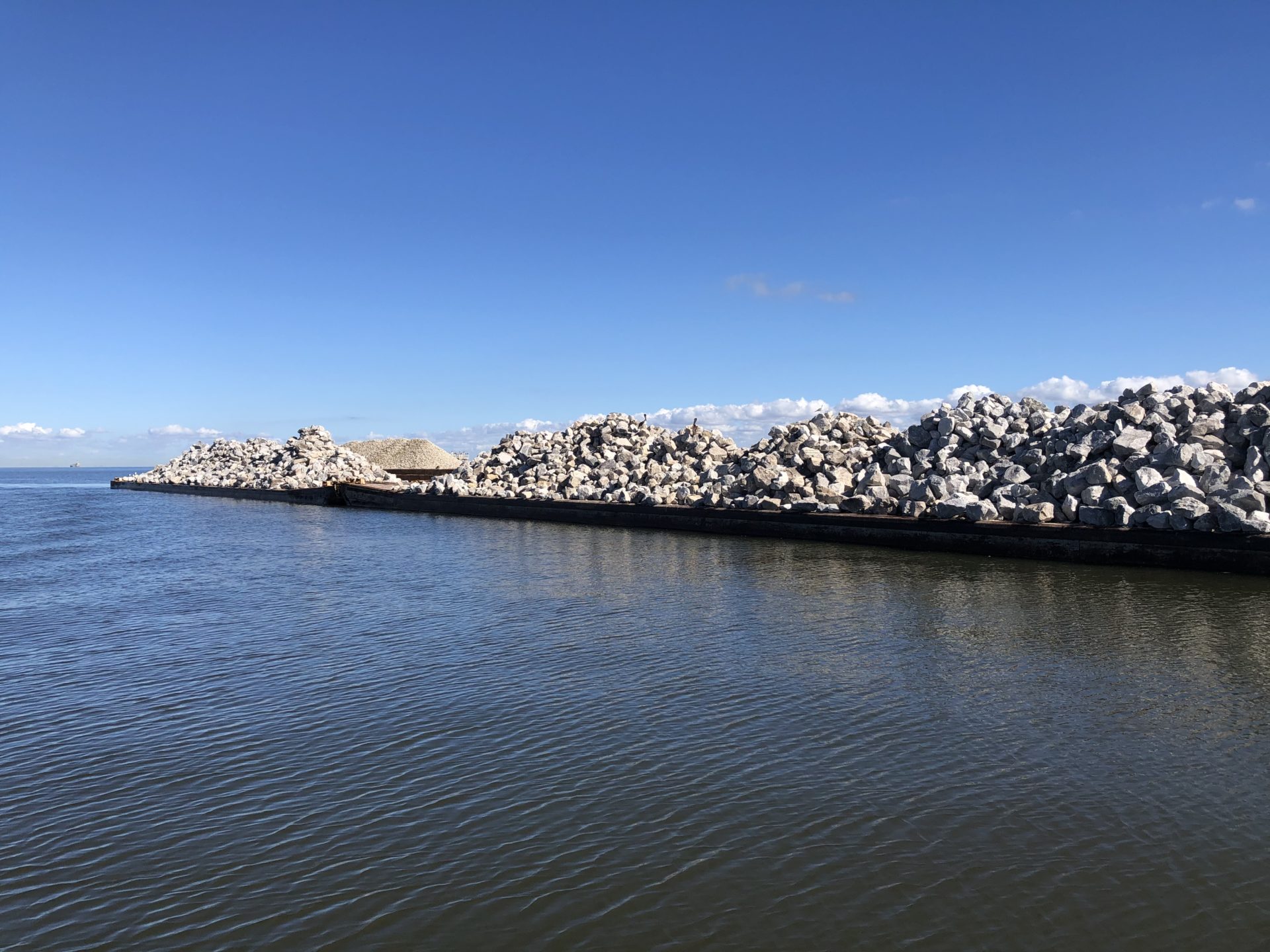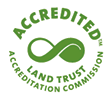40 acres of new oyster habitat created in first dual sanctuary and commercial harvest reef of its kind in Galveston Bay
- January 27, 2021
- News

Media Contacts:
Claire Everett or Carson Sartain
832-536-2259 | 214-335-5836
ceverett@galvbay.org or carson.sartain@TNC.org
(Houston, TX – January 27, 2021) – 40 acres of new oyster habitat were recently constructed in the Upper Galveston Bay/Trinity Bay area and it’s the first restoration project of its kind in Galveston Bay. The partnership project between conservation organizations Galveston Bay Foundation, The Nature Conservancy, and Texas Parks and Wildlife Department aims to demonstrate the Bay’s oyster population can be sustainably managed without completely restricting commercial harvest.
After a two-year closure to allow oysters to populate the reefs, 25 acres of reef will be open for commercial harvest while the other 15 acres will be preserved as a broodstock sanctuary reef to provide larvae to the harvestable sites, providing a sustainable approach to commercial oyster harvest.
“In the past, reefs have been restored either to enhance oyster harvest or to enhance the ecological benefits of oysters and their habitats,” said Bill Rodney, Coastal Ecologist at Texas Parks and Wildlife. “The combination of both concepts in one project is a novel approach that few other states have tried.”
Project partners established the sanctuary reef as a larval source reef between the two harvestable sites. The sanctuary reef will function as a larvae factory, delivering high-density larvae clouds to the adjacent harvestable reefs via prevailing tidal currents—which were measured and then modeled by the Texas Water Development Board. This will help the harvestable reefs recover more quickly from the effects of oyster harvest activities. To maintain a high-density population of large oysters on the sanctuary reef, this section was constructed out of larger materials that are resistant to the effects of oyster dredges, another novel aspect of the project’s design.
“Oysters are a vital component of a healthy estuary and we are particularly excited that this innovative reef will provide ecosystem service benefits to Galveston Bay and also sustainably support our commercial fishing industry,” said Bob Stokes, Galveston Bay Foundation President.
The new oyster habitat in the 40-acre reef complex will help filter coastal waters, enhance water quality, and provide food and shelter for over 300 different species of fish, shrimp and crabs, and other invertebrates. Although oysters provide a wealth of benefits, approximately 50 percent of the oyster reefs in Galveston Bay have been lost due to pressure from commercial fishing combined with extreme weather events, such as Hurricanes Ike and Harvey.
Existing efforts through Galveston Bay Foundation’s Oyster Shell Recycling Program, the Texas Parks and Wildlife Department’s Oyster Shell Recovery Fund, and The Nature Conservancy, place hard substrate in the form of recycled shell, limestone, and other natural stone to the Bay to provide much needed oyster habitat. And in this new reef project, over 20,000 tons of limestone were placed on the bay bottom to establish oyster habitat in the southwestern region of Trinity Bay.
The Nature Conservancy completed a similar project in Matagorda Bay with RESTORE Act funding in 2014. Today, the reef is teeming with marine wildlife and oysters can be found on 70 percent of the reef’s surface. It has also become a hot spot for anglers and has helped to generate an additional $1.27 million in annual economic activity for the state of Texas through tourism, fishing guide excursions and recreational fishing.
The Trinity Bay project team hopes to see similar results in the coming years.
“The innovative model we’ve leveraged with this reef restoration is a strategy that’s replicable all over the world because it’s a solution everyone can see themselves in,” said Lauren Williams, Resilient Coast Program Director at The Nature Conservancy in Texas. “Instead of reef-by-reef restoration work moving forward, we can think more broadly about restoring whole bays and estuaries, all while working with fisheries to meet their needs.”
Funding for the Galveston Bay Sustainable Oyster Reef Restoration Project was provided by the National Fish and Wildlife Foundation through the Gulf Environmental Benefit Fund. Texas Water Development Board provided additional support for this project.
###
About Galveston Bay Foundation
Established in 1987, the Galveston Bay Foundation is a conservation non-profit organization. Its mission is to preserve and enhance Galveston Bay as a healthy and productive place for generations to come. It implements diverse programs in land preservation, habitat restoration, water quality and quantity, STEM education, and advocacy. To learn more, visit galvbay.org or follow @GBayFoundation on Twitter.
About The Nature Conservancy
The Nature Conservancy is a global conservation organization dedicated to conserving the lands and waters on which all life depends. Guided by science, we create innovative, on-the-ground solutions to our world’s toughest challenges so that nature and people can thrive together. In Texas and across the globe, we are conserving lands, waters and oceans at an unprecedented scale while mitigating and adapting to a changing climate. Since 1964, The Nature Conservancy in Texas has protected nearly one million acres of land, established 38 nature preserves and worked with state and federal agencies to create and expand state parks, national parks and wildlife refuges. These protected public lands include Enchanted Rock State Natural Area, Big Bend Ranch State Park, Caddo Lake State Park, and national wildlife refuges along the Texas Gulf Coast. Our freshwater program has protected more than 200 miles of stream and river habitat. To learn more, visit www.nature.org or follow @nature_press on Twitter.
About Texas Parks and Wildlife Department
Texas Parks and Wildlife Department (TPWD) is the State of Texas’ primary agency for the management and conservation of the state’s natural and cultural resources. The agency strives to provide hunting, fishing and outdoor recreation opportunities for the use and enjoyment of present and future generations of Texans. While working to achieve this lofty goal, TPWD has been recognized as a national leader in implementing effective natural resources conservation and outdoor recreational programs. The agency’s goals are: To serve the state of Texas, its citizens, and its employees with the highest standards of service, professionalism, fairness, courtesy, and respect; Rely on the best available science to guide our conservation decisions; Responsibly manage agency finances and appropriations to ensure the most efficient and effective use of tax-payer and user fee resources; Attract and retain the best, brightest, and most talented workforce to successfully execute its mission. Since 2007 TPWD’s Coastal Fisheries Division has restored more than 400 acres of oyster habitat along the upper Texas Coast.






